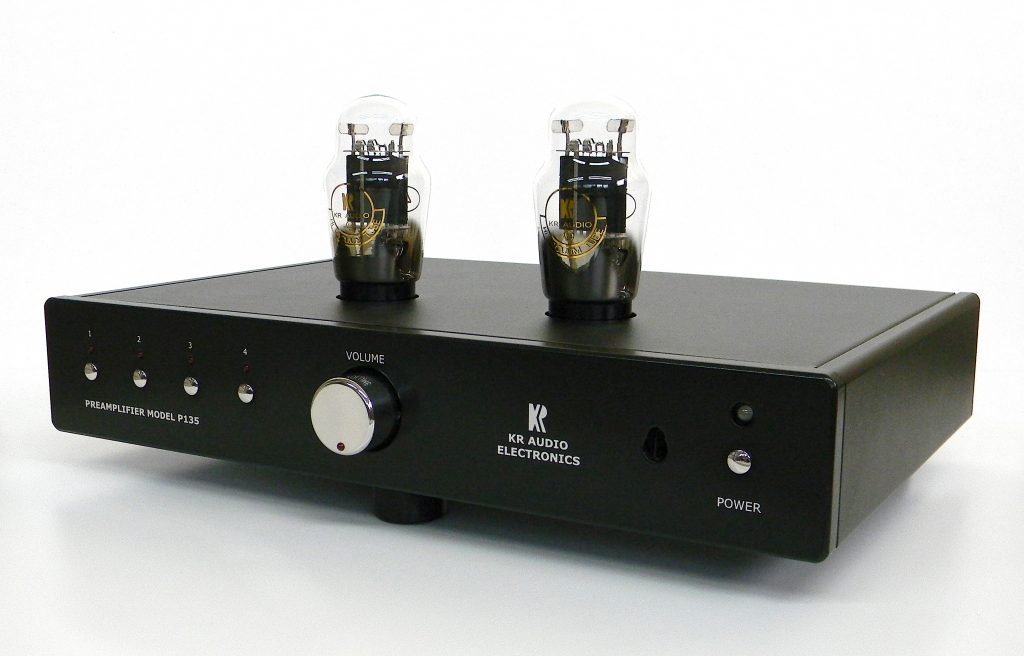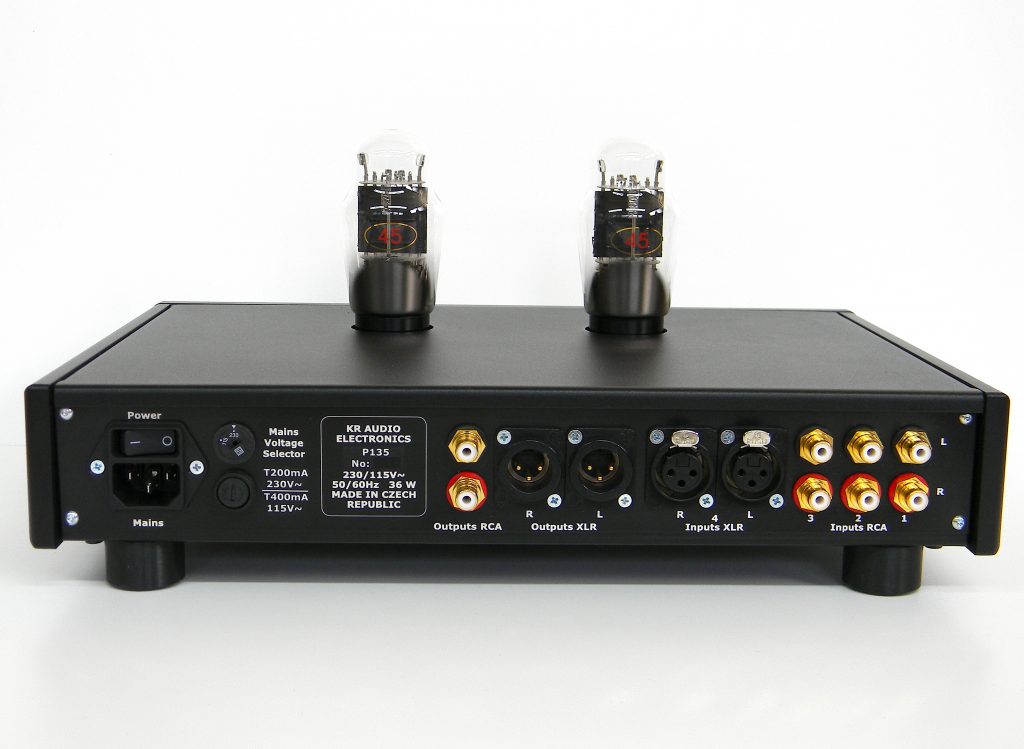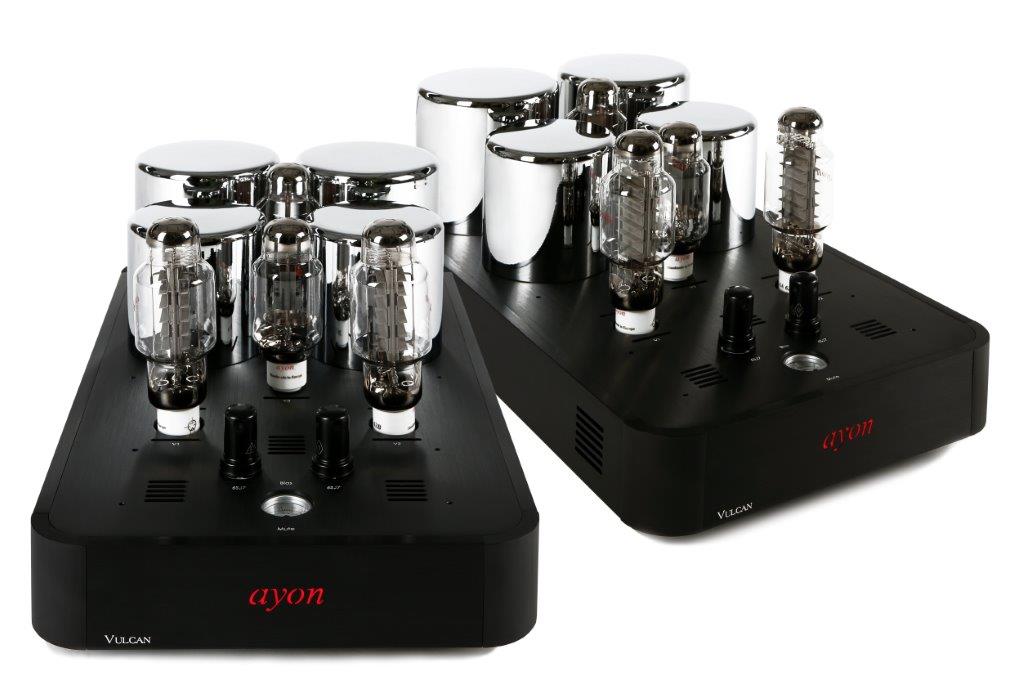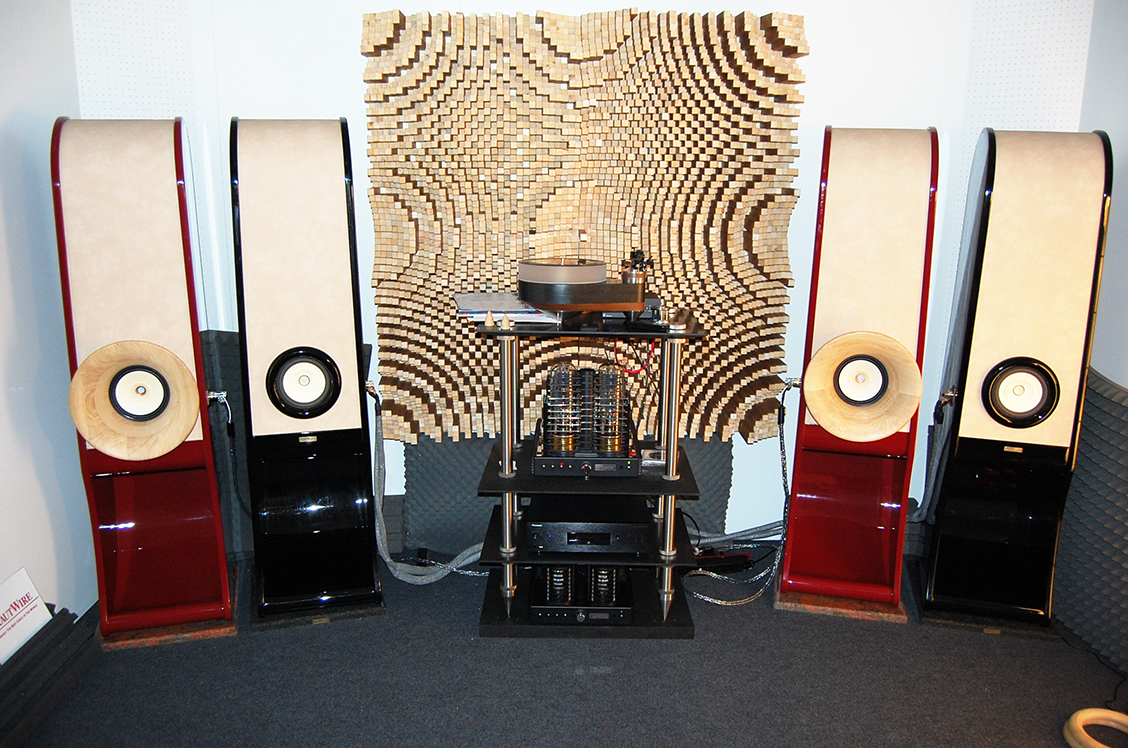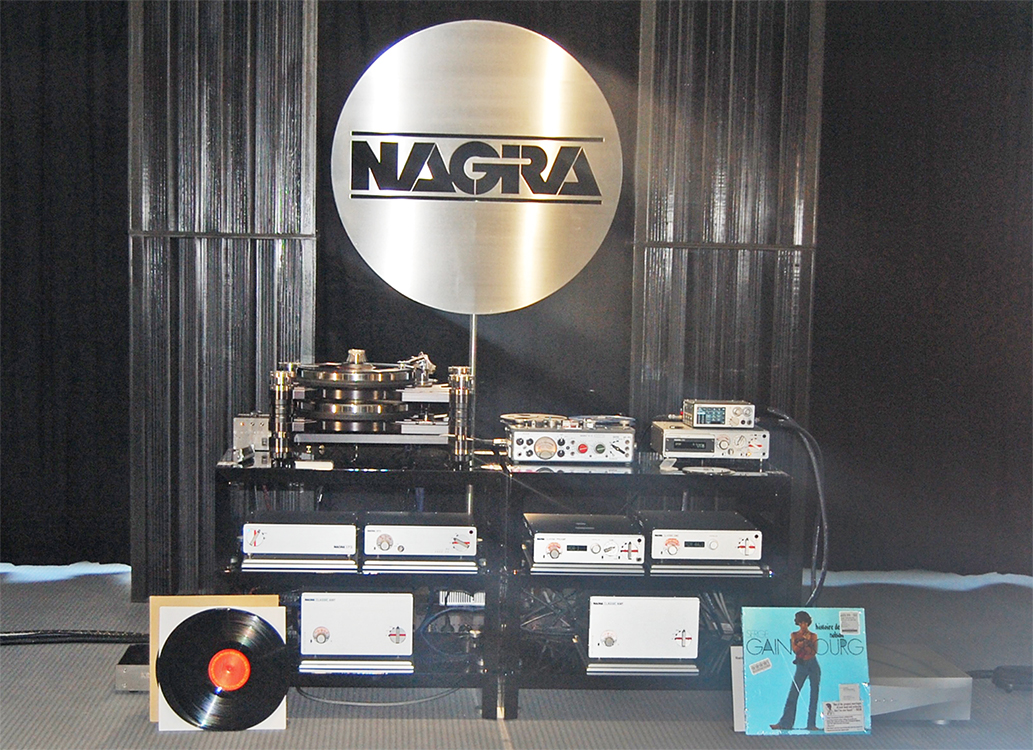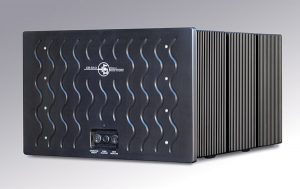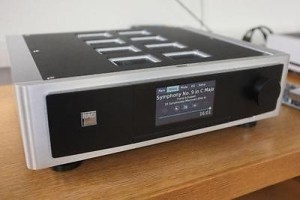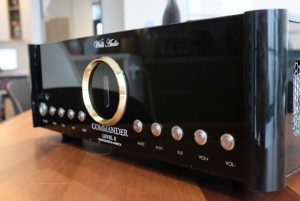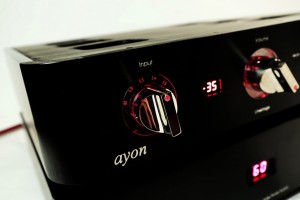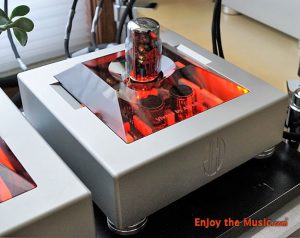The little preamplifier that could?
KR Audio is the now relatively well known Czech amplifier brand that made its name on very big, and big sounding, tubes and tube amplifiers. Who, in the audiophile world, doesn't know the fearsome name of the Kronzilla, with its awe-inspiring KR T1610 output tubes. While these are no longer the largest tubes used in an audio amplifier (the WE 212 is at least as big and the tube used in the NAT Magma is for sure larger) at the time of introduction they surely were and what was more impressive was that they were a new engineering feat and not something from the "glorious" past.
As befitting such a large output tube, KR Audio made the large and heavy Kronzilla monos and later stereo amplifiers to showcase this tube. Subsequent KR Audio amplifiers were somewhat smaller but still by objective standards large, heavy and hot running, which is typical for their Class A SET (albeit hybrid) design. The KR sound fits with this visual persona as the amps make a big, bold and extremely dynamic sound with a quite natural tonal balance.
So many of you might now be wondering, "What is Brad going on about here… I thought this was a preamplifier review", well it is but it must be emphasized that KR has traditionally dealt in large gear and so it comes as quite a surprise when one unboxes a KR Audio P-135 preamplifier and sees just how small this preamplifier is! Protruding tubes notwithstanding, we have a thin box, about the size of a large book, that is utterly petite in comparison to its amplifier partners. Not only that, it is relatively light weight, despite the fact that it actually uses output transformers to couple those beautiful little 45 direct heated triode (DHT) output tubes to the outside world.
This preamplifier makes even a Nagra (who makes some of the most compact high end gear I have seen) look relatively large. It seems that Marek Genecev, KR Audio's chief designer, has forsaken his massive amplifier designs and gone positively lifestyle with this new preamplifier (to be fair the also available P-130 and the previous P-150 were equally small). However, all is not as it seems. Popping the hood it is a model of tidiness and maximal use of minimal space. Other than the output tubes the entire preamplifier is solid-state, including the input section of the preamplifier.
The power supply is in a separate compartment and makes heavy use of voltage regulation for all stages of the preamplifier. The input section is a JFET for gain that feeds into the 45 DHT output tube. This tube is coupled to through an output transformer of KR Audio's own design and delivers a low 100 ohm output impedance to the partnering amplifier, which also makes this a very flexible preamplifier for all types of amplifiers and no worries about the input impedance from the partnering amp.
So, what we have is in fact a design that closely mirrors their amplifier designs that also utilize this "reverse" hybrid concept and basically makes this closer to a mini-Kronzilla power amp than a preamplifier. Only the non-speaker friendly output impedance and of course the miniature size gives the game away. Now, I have gone on record in the past saying that I felt that a preamplifier benefited from a massive and well-regulated power supply just as much as any power amplifier and that the best examples of the breed I had heard did exactly this. Here we have a preamplifier that is daring me to revise my views (built up from a couple decades of experience, mind you) and despite the fact that I have been a big fan of KR Audio products since I first reviewed one more than 10 years ago (see my review of the KR Audio Kronzilla DM monoblocks HERE). The reputation of KR Audio building extremely powerful and dynamic sounding products seemed, to my mind, to be at risk with this cute little product. How could it possibly out dynamic its burly competition, including my, now discontinued but similarly priced when new, NAT Plasma? The NAT has a huge power supply, dual mono and fully tube rectified and regulated with an output stage of 6 PCC88s per channel thus giving an output impedance of around 100 ohms and gives a big boned powerfully dynamic performance… tough competition indeed.
The little preamplifier that could!
Before I listened at all to the P135, I plugged it in, plopped it on top of my NAT and let it run for about 3 days straight before actually connecting to my system. Once I felt the preamplifier was somewhat burned in and fully warmed up, I connected it to the direct input of my Ayon Crossfire and sat down for a listen.
Immediately, I was struck by the superb, smooth and easy resolution, something that I have now come to equate with the proper use of DHTs. The next thing that was clear was that this tiny preamplifier packed a dynamic wallop. Fine detail coupled with superb micro and macro dynamics meant that one can hear deeply into the recording with the P135 with an utterly fatigue free yet highly resolved and dynamic expression.
What was going on here? I had only heard this kind of punch and drive with much larger preamplifiers and their much larger power supplies behind. Could Marek have done it through clever use of regulation? It seemed so. Bass was not only powerful but well resolved and defined. Mids are holographic and bursting with natural vibrancy and tonal fullness. The highs are where this preamplifier though really seems to standout. Highly resolving but at the same time totally smooth and fatigue free.
Another standout feature, and something I expect from a KR Audio product, was the imaging and soundstaging. The layering of the soundstage was deep and well resolved right to the back and images were 3 dimensional and palpable. Really well executed and a joy to listen to.
I am not going to run through the litany of different recordings with this preamplifier like I have in some past reviews because, frankly, they all pretty much did what I have described above more or less to the limits of the recordings themselves. What I am going to do is to share with you my findings on direct comparisons with other fine preamplifiers and a couple of indirect observations (since those preamplifiers are no longer with me but my impressions in comparison may still be useful).
The first, and arguably most important, comparison was against my NAT Plasma preamplifier. Now, my friends and I had a few months earlier did a kind of preamplifier shootout comparing the NAT Plasma to the Einstein "The Tube" Mk II preamplifier, the Silvaweld SWC1000R (one of my favorites from the past) and the PureSound L10 with Lundahl output transformer upgrade. The results of that shootout: The listening panel (there were 5 of us) gave the nod to the Einstein (it was in its home system though) and the NAT somewhat surprisingly a strong second place showing, even above the beloved Silvaweld. None of these preamplifiers were bad though but there were distinct advantages in resolution and soundstage as you went up the ladder.
So it was against a strong contender that the KR Audio P-135 was thrown into the mix. Dynamically, the NAT is a beast and makes well resolved solid images with relatively dense tonality. Its balanced brother, the Symmetrical, is one of the top rated preamplifiers in the German magazines despite being one of the cheapest. The last list price for the NAT was a similar 7000 euro, so we are really comparing apples to apples here and fighting for the same customer (or would be if NAT still made the Plasma). How did the KR fare against the NAT? Very well indeed! It was a bit lighter on its feet, but the bass was just as powerful and perhaps more resolved. Tonal balance was a bit lighter and if truth to be said, probably more accurate as I think even greater tonal contrast was available from the KR. Dynamics were for all practical purposes equal, and soundstaging and image palpability perhaps slightly better for the P-135.
It was not a night and day difference on this somewhat objective, subjective mental checklist; however, there was a musical glue with the KR that allowed it to make music make more sense. Could it be the DHT effect? All I can say is perhaps and a direct comparison with the little brother the P-130 (still in production) would be an interesting comparison as it uses an indirect heated small signal triodes.
Another head-to-head comparison was between the KR P-135 and our local champion the Einstein "The Tube" MkII preamplifier. For this comparison, I had to transport the P-135 over to a colleague of mine and do the comparison in his system, which consists of Thiel CS3.7 speakers and an Aries Cerat Diana Integrated amplifier. Source were a top of the line analog rig with big Transrotor TT, SME V arm, and Transfiguration Proteus was supplying the signal (through a Silvaweld phonostage) to the preamplifiers for this review.
It became immediately obvious that the Einstein throws a wider soundstage than the KR P-135 and is more lit up on top. However, the KR countered by giving a deeper soundstage with superior layering and has a more organic "whole" feel in the delivery of the music than Einstein, which overall has a more analytical sonic character. Resolution and detail presentation of both was equivalent in terms of content but not in how it is presented to the listener, where the Einstein feels more "pushy" in the presentation while the resolution of the KR is more relaxed and in the flow of the music. My analysis of this difference hinges primarily on how both preamplifiers deliver high frequencies: the KR has extended highs but they are slightly soft and airy whereas the Einstein is more explicit but this leads potentially to a bit of hardness in the sound that could become fatiguing over time… at least at elevated listening levels.
So, what now to make of this smallest of high-end preamplifiers? It is highly resolved in the best sense of the word where one can see into the recordings of sufficient quality. It has a soft touch that seems to be often in character with DHT output stages but loses none of the dynamics one would expect from a top preamplifier. All of this was more or less what I expected given the KR Audio heritage and it is just these characteristics that give their big amps such a strong reputation for performance. What surprised me the most was the effective punch in the bass that it delivers, which is the equal of the NAT Plasma and Einstein "The Tube" preamplifiers. This is also in character with KR amps but given the diminutive size of this preamplifier I was taken a bit off guard. Finally, music through this preamplifier just made sense and it welded things together in a convincing manner that allowed dissection without disintegration. I think that the KR Audio P-135 should be one anyone's shortlist when looking for a preamplifier between 4-10K Euro as it is really superb sounding and as such offers excellent value.
KR Audio P-135 Preamplifier
Retail: Line only version (reviewed) 5800 Euro.
KR Audio




